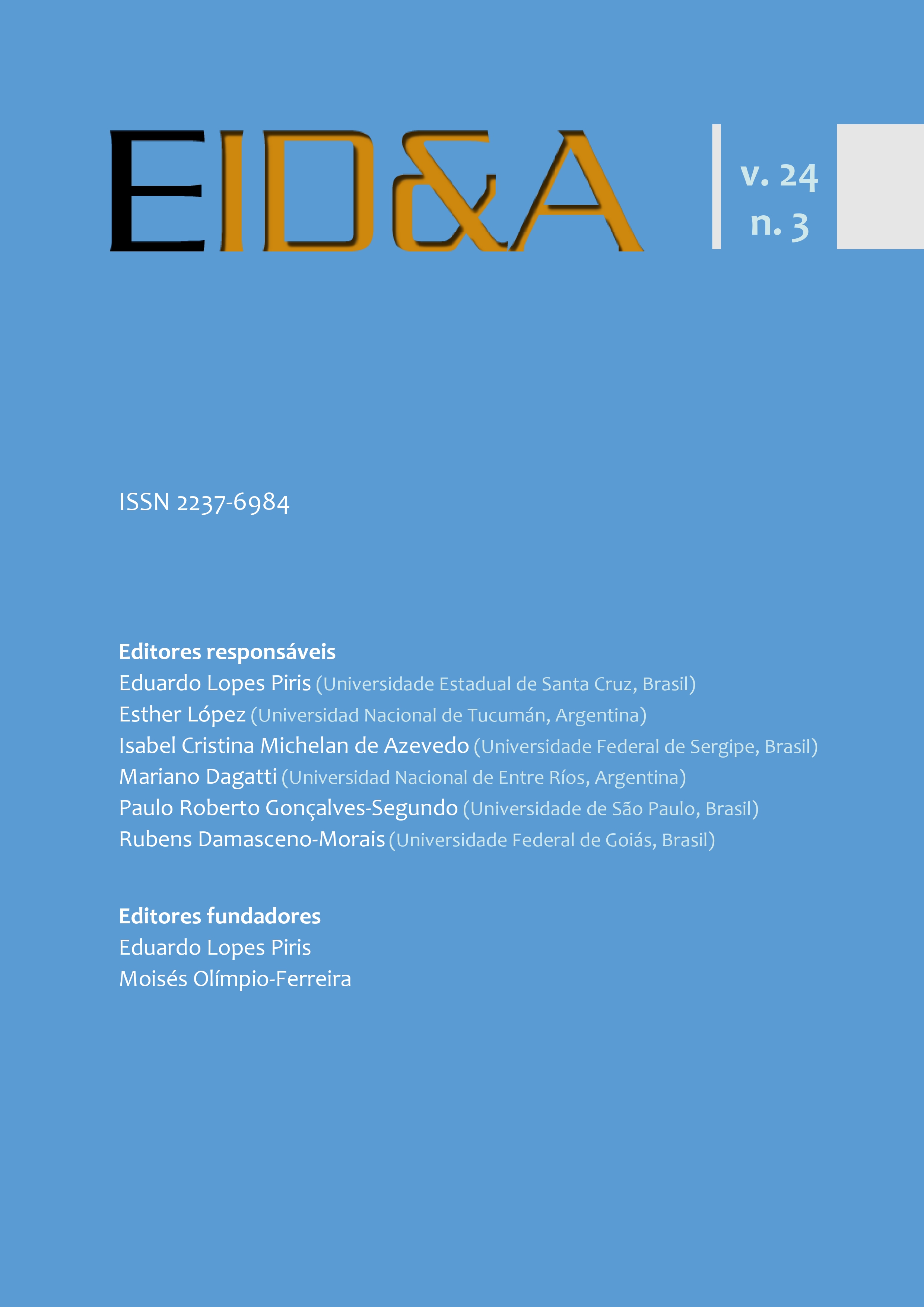A mobilização do pathos no Júri do Caso Kiss: uma análise das marcas textuais no discurso
Resumo
Investigar o pathos, um dos elementos que confere força persuasiva ao discurso, significa olhar para a inscrição da afetividade na linguagem. Desse modo, este estudo dedica-se a analisar a mobilização do pathos no depoimento de um dos réus do Caso Kiss a partir das marcas textuais apresentadas nos comentários da transmissão do julgamento, realizado em 2021. Para isso, buscamos respaldo teórico-metodológico nas discussões propostas pela Teoria da Argumentação no Discurso (Amossy, 2020) e pela Linguística Textual (Cavalcante et al, 2020), a fim de contemplar a dimensão discursiva e textual do discurso, considerando as marcas textuais em funcionamento com os elementos dóxicos e estereotípicos. Como resultados, foi possível perceber as possíveis reações patêmicas de injustiça, indignação, pena, compaixão e tristeza, direcionados à imagem do réu enquanto inocente; de indignação e constrangimento relacionado aos partícipes do Júri, principalmente à Promotoria; e de indignação, repugnância e raiva à imagem do réu enquanto culpado.
Downloads
Referências
AMOSSY, Ruth. A argumentação no discurso. Tradução: Angela M. S. Corrêa et al. 1. São Paulo: Contexto, 2020.
AMOSSY, Ruth. Por uma análise discursiva e argumentativa da polêmica. Tradução: Angela Maria da Silva Corrêa. EID&A - Revista Eletrônica de Estudos Integrados em Discurso e Argumentação, Ilhéus, n. 13, p. 227-244, jan/jun.2017.
ARBEX, Daniela. Todo dia a mesma noite: a história não contada da Boate Kiss. Rio de Janeiro: Intrínseca, 2018.
ARISTÓTELES. Retórica. Tradução e notas: Manuel Alexandre Júnior, Paulo Farmhouse Alberto, Abel Do Nascimento Pena. Lisboa: Imprensa Nacional-Casa Da Moeda, 2005.
CAVALCANTE, Mônica Magalhães et al. Linguística textual e argumentação. Campinas/SP: Pontes editores, 2020.
CAVALCANTE, Mônica Magalhães; BRITO, Mariza Angélica Paiva. O caráter naturalmente recategorizador das anáforas. In: AQUINO, Zilda Gaspar Oliveira de. GONÇALVES-SEGUNDO, Paulo Roberto (orgs.). Estudos do Discurso: caminhos e tendências. São Paulo: Paulistana, 2016, p. 119-133.
CHARAUDEAU, Patrick. Os estereótipos, muito bem. Os imaginários, ainda melhor. Tradução: André Luiz Silva, Rafael Magalhães Angrisano. Entrepalavras, Fortaleza. v. 7, p. 571-591, jan./jun. 2017. Disponível em: http://www.entrepalavras.ufc.br/revista/index.php/Revista/article/view/857/433. Acesso em: 15 abr. 2024.
PERELMAN, Chaïm; OLBRECHTS-TYTECA, Lucie. Tratado de Argumentação: a Nova Retórica. Tradução: Maria Ermantina Galvão. 3. ed. São Paulo: Martins Fontes, 2005.
PLANTIN, Christian. As razões das emoções. In: MENDES, Emília. MACHADO, Ida Lúcia (org.). As emoções no discurso. Campinas: Mercado das Letras, 2010, p. 57-80.
UNGERER, Friedrich. Emoções e linguagem emocional nas notícias em inglês e alemão. In: CAVALCANTE, Mônica. Magalhães; BRITO, Mariza Angélica Paiva (orgs.). Texto, discurso e argumentação. Campinas/SP: 2020, p. 269-296.
Copyright (c) 2024 Autor e Revista EID&A

This work is licensed under a Creative Commons Attribution-NonCommercial 4.0 International License.
Autores que publicam nesta revista concordam com os seguintes termos:
Autores mantêm os direitos autorais e concedem à revista o direito de primeira publicação, com o trabalho simultaneamente licenciado sob a Licença Creative Commons Attribution que permite o compartilhamento do trabalho com reconhecimento da autoria e publicação inicial nesta revista.
Autores têm autorização para assumir contratos adicionais separadamente, para distribuição não-exclusiva da versão do trabalho publicada nesta revista (ex.: publicar em repositório institucional ou como capítulo de livro), com reconhecimento de autoria e publicação inicial nesta revista.
Autores têm permissão e são estimulados a publicar e distribuir seu trabalho online (ex.: em repositórios institucionais ou na sua página pessoal) a qualquer ponto antes ou durante o processo editorial, já que isso pode gerar alterações produtivas, bem como aumentar o impacto e a citação do trabalho publicado (Veja O Efeito do Acesso Livre).






